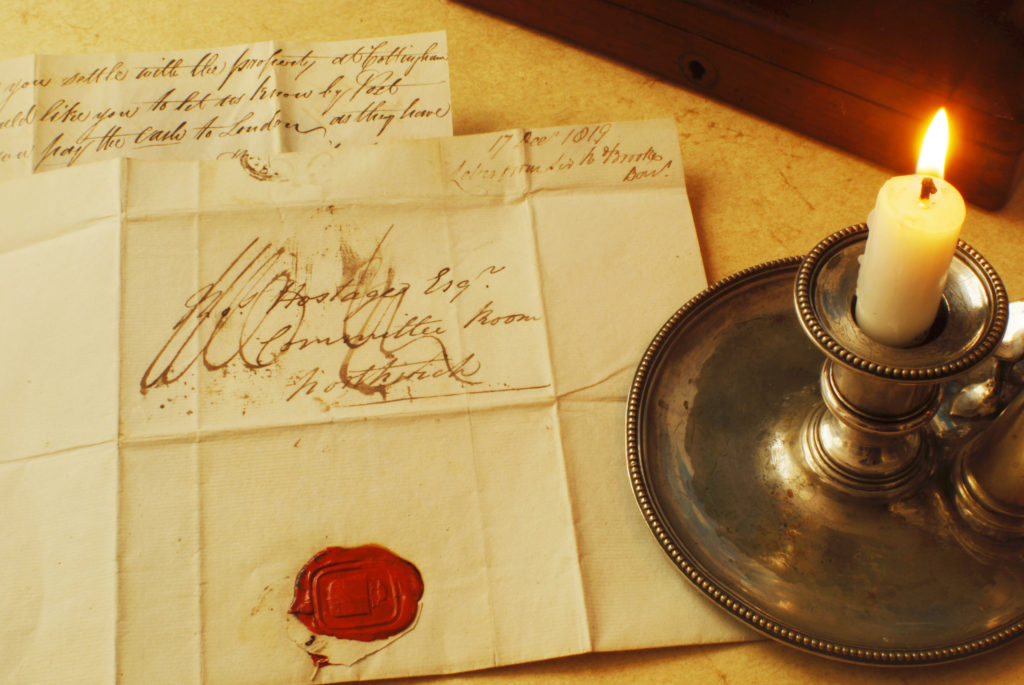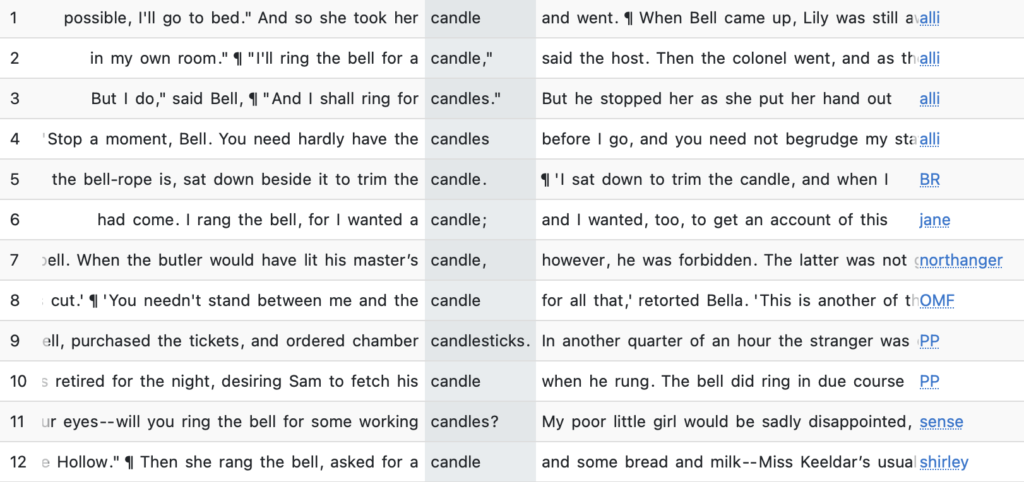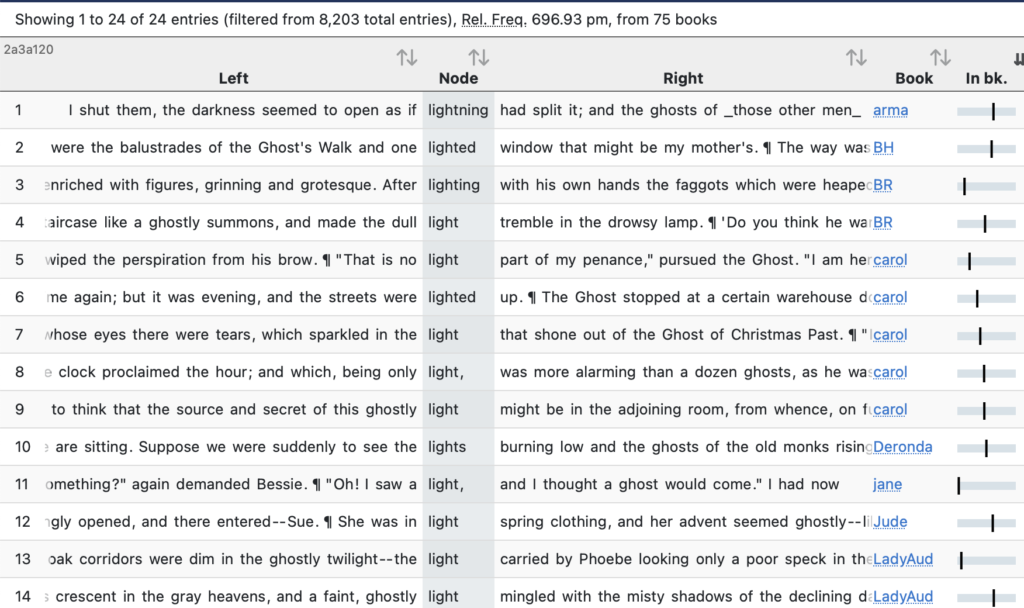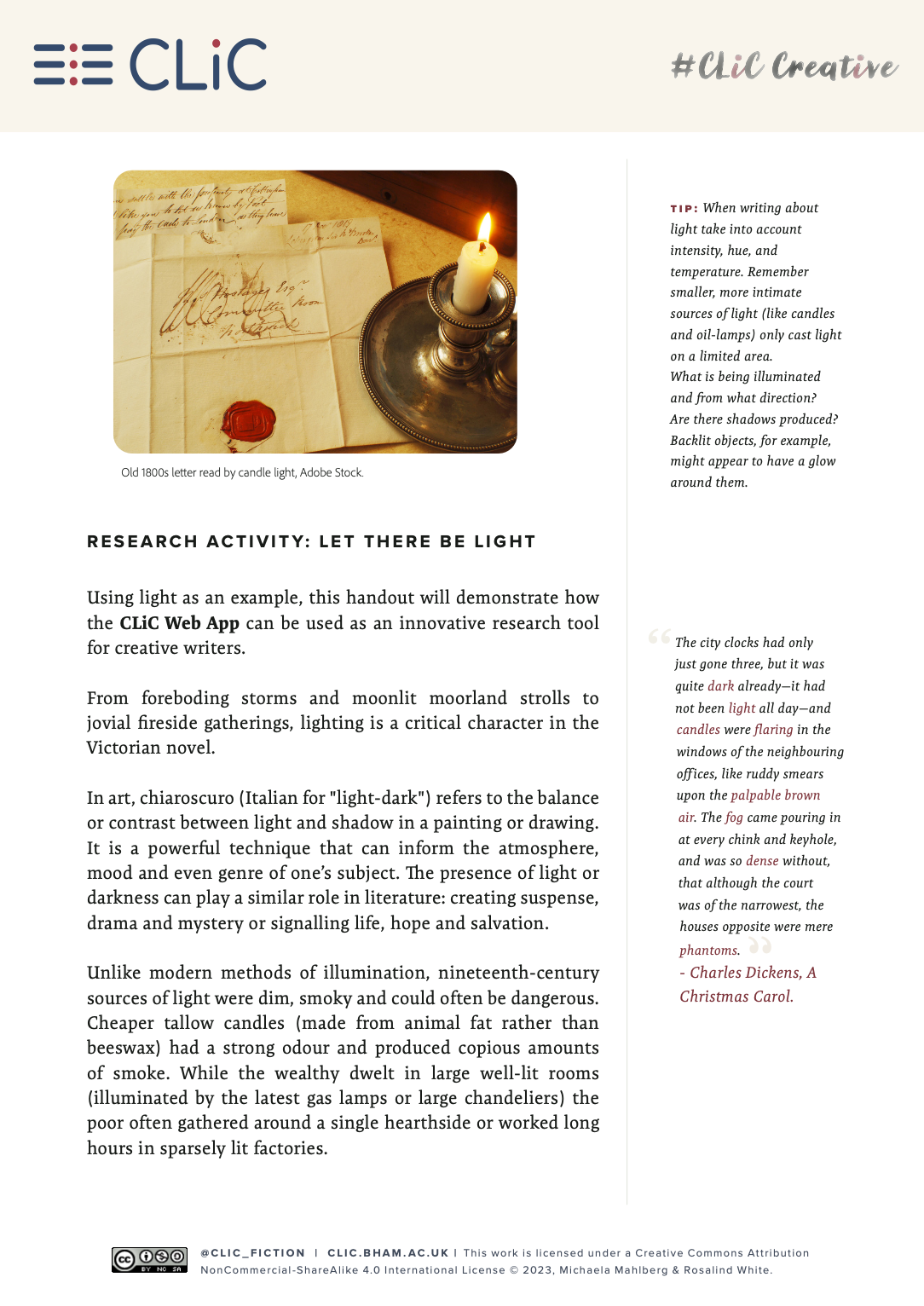Using light as an example, this blog post demonstrates how the CLiC Web App can be used as an innovative research tool for creative writers of historical fiction. Previous #CLiCCreative posts by Dr Rosalind White are available here. This post is also available as a handout.

From foreboding storms and moonlit moorland strolls to jovial fireside gatherings, lighting is a critical character in the Victorian novel.
In art, chiaroscuro (Italian for ‘light-dark’) refers to the balance or contrast between light and shadow in a painting or drawing. It is a powerful technique that can inform the atmosphere, mood and even genre of one’s subject. The presence of light or darkness can play a similar role in literature: creating suspense, drama and mystery or signalling life, hope and salvation.
Unlike modern methods of illumination, nineteenth-century sources of light were dim, smoky and could often be dangerous. Cheaper tallow candles (made from animal fat rather than beeswax) had a strong odour and produced copious amounts of smoke. While the wealthy dwelt in large well-lit rooms (illuminated by the latest gas lamps or large chandeliers) the poor often gathered around a single hearthside or worked long hours in sparsely lit factories.
Tip: When writing about light take into account intensity, hue, and temperature. Remember smaller, more intimate sources of light (like candles and oil lamps) only cast light on a limited area. What is being illuminated and from what direction? Are there shadows produced? Backlit objects, for example, might appear to have a glow around them.
The city clocks had only just gone three, but it was quite dark already—it had not been light all day—and candles were flaring in the windows of the neighbouring offices, like ruddy smears upon the palpable brown air. The fog came pouring in at every chink and keyhole, and was so dense without, that although the court was of the narrowest, the houses opposite were mere phantoms. – Charles Dickens, A Christmas Carol.
Research Activity: Let there be Light
This activity can also be downloaded as a handout here.
Using our earlier blog post for guidance, select a number of texts according to the period in which your novel takes place. (This is called building your corpora).
INSTRUCTIONS:
- Go to clic.bham.ac.uk, click ‘concordance’, and select these texts from the drop-down menu under ‘search the corpora’. You can automatically select a sample of texts in a given era by using the following links:
-
- works set in the Georgian era (1714-1837)
- works set in the Regency era (1811-1820)
- works set in the early nineteenth century (1800-1837)
- works set in the mid-Victorian era (1837-1880)
- works set in the fin de siècle (1880-1900)
2. Select ‘all text’ under the subsets option.
3. Think of a term relating to light that fits your chosen historical period. You can use the following list as guidance.
beam, candle, flash, fire, glow, glimmer, gleam, glint, lamp, lantern, light, lit, moon, shine, sun.
4. Type this term under ‘search for terms’ and hit enter. An asterisk can be used as a wildcard – so candle* would also find candles or candlestick, and light* would also find lights and lightning.
What can you learn from your concordance results in terms of what it would have been like to live in your chosen time period?
Pay close attention to the words that sit on either side of your chosen term (in corpus linguistics, these are called collocates). Keep in mind the book each concordance line originates from (this is listed on the right-hand side).
If you detect a pattern, you can filter your results further using the ‘filter rows’ option.
What is the light source they are using? Lanterns, the fireside, a paraffin oil lamp? It is expensive?
![]()
How are they obtaining this source of light? From the servants via bell?

How is the source of light presented? Lace-covered and illuminating fine china (as in Dorian Gray)? Or cheerful and from a blazing fire (as in Pride and Prejudice)?
What is light itself associated with? Reason, revelation, and scientific discovery?

Religious fervour?

Or ghosts, spirits and the supernatural?

Alternatively, what doesn’t come up – what words would be an anachronism? How can you weave what you have learnt into your own writing?
Over to you…
Would your character be able to afford many candlesticks? Would they have been rich enough to send for a servant to fetch one in the middle of the night? If their lamp was powered by electricity rather than gas would this have been novel enough for them to expressly mention?
You can write your answers in the downloadable handout provided.
If you found this activity useful, why not post some of your findings under the hashtag #CLiCCreative, or tag us @CLiC_fiction on Twitter?


Join the discussion
0 people are already talking about this, why not let us know what you think?